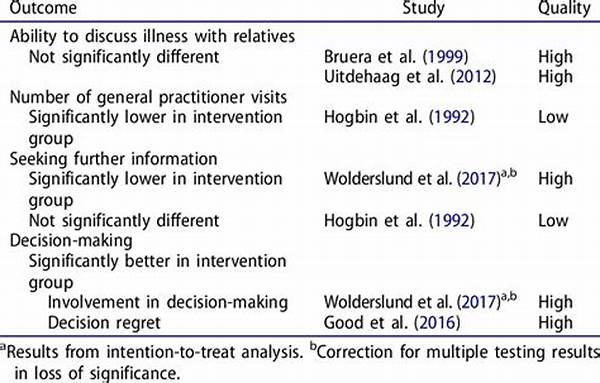The digital age has transformed how we seek information, leading to sophisticated search patterns across different platforms. Comparative search behavior studies offer insights into these evolving online tendencies. This exploration helps understand how varying user demographics seek information, impacting areas like marketing, website design, and user experience enhancement.
Read Now : Intimate Renditions Of Hit Songs
Diving Deep into Search Patterns
In the arena of comparative search behavior studies, researchers delve into how different populations interact with search engines. Picture this: a teenager searching for the best gaming PC, while a retiree looks for easy gardening tips. Both have distinct needs and approach the search bar differently. Teens might rely on keywords or memes, whereas older adults could prefer exact phrases or full questions. These differences reveal a lot about user priorities and how search engines can evolve to cater to diverse needs.
Now, why bother with comparative search behavior studies? Well, understanding these habits helps companies tailor their marketing efforts and improves user satisfaction. By evaluating how various groups use search engines, researchers can identify trends, anticipate future shifts, and propose adaptive methods to optimize online experiences.
Slang Styles in Comparative Search Studies
1. Gen Z’s all about abbreviations. In comparative search behavior studies, their lingo shows rapid phrase reduction.
2. Millennials appear somewhere in the middle, combining traditional and modern slang in comparative search behavior studies.
3. Baby Boomers tend to stick to more traditional language, steering clear of offbeat slang during comparative search behavior studies.
4. Across ages, popular culture references color comparative search behavior studies, enriching search queries.
5. Emoji use bridges generations in comparative search behavior studies, adding an emotive aspect to digital searches.
Linguistic Variations Across Platforms
The fascinating world of comparative search behavior studies unveils the dynamic nature of language evolution online. Among different age groups and demographics, language and slang continuously evolve, reflecting broader societal trends. Think about it: teens using “LOL” two decades ago, now opting for new abbreviated terms like “af” (as in ‘as f’) or “sksksk.” Such changes not only signify cultural shifts but also play a crucial role in accessing and disseminating information online.
Amid this linguistic evolution, comparative search behavior studies provide a panoramic view of how people use language uniquely across digital platforms. Influencers set trends, cultural phenomena shift lexicons, and user-generated content fosters unparalleled creativity. By dissecting these interactions, we gain a more nuanced view of how language guides digital information retrieval processes.
Understanding Social Influences
The realm of comparative search behavior studies offers an intriguing perspective on how societal trends influence search behavior. Here are ten aspects that stand out:
1. Music influences popular search terms.
2. Memes drive keyword trends.
3. Viral challenges spike certain searches.
Read Now : “peacebuilding Through Diplomatic Channels”
4. TV shows impact cultural lexicons.
5. Events like sports increase search volume.
6. Political happenings cause search fluctuations.
7. Seasonal events shift search trends.
8. Celebrities trigger search patterns.
9. Global crises affect search queries.
10. New tech introductions guide language adaptations.
Unpacking Digital Dialects
In the field of comparative search behavior studies, digital dialects—unique linguistic constructs emerging from online communities—are vital to understand linguistic nuances. Social media platforms are primary breeding grounds for these dialects, acting as arenas for users to flex creativity and culture-inspired language. For instance, TikTok and its distinctive slang create converging and diverging points in digital linguistics.
As digital dialects develop, comparative search behavior studies pressure search engines to adapt, recognizing emoji-heavy queries or prioritizing trending memes. Language continues to shape our online navigational methods, and these studies constantly evaluate the interplay between user-driven language evolution and technology’s capacity to facilitate seamless digital interactions.
Conclusions on Search Behavior Studies
When summarizing the findings from comparative search behavior studies, the exploration of user interactions with search engines reveals a complex tapestry. Among today’s vast digital landscape, slang and language evolve dynamically, influenced by demographics’ preferences and cultural phenomena.
While older generations lean towards precision and formality, younger users innovate with playful and often cryptic slang, challenging search algorithms. This contrasts set the stage for technological adaptation, enhancing search engines to align with increasingly sophisticated, user-driven language patterns, facilitating efficient and personalized digital experiences.
